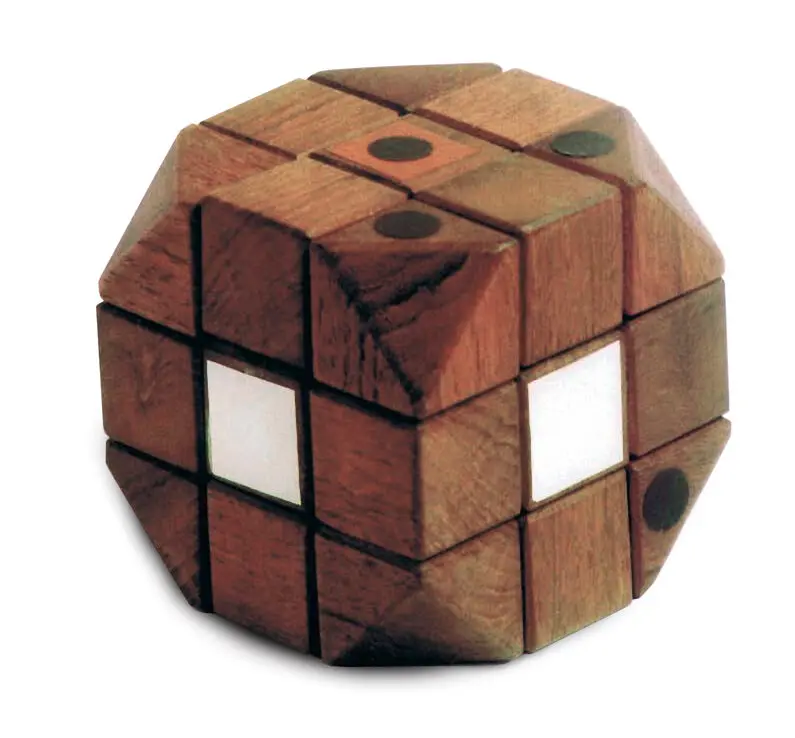
History of the Rubik's Cube: From Creation to Speedcubing
Discover the history of the Rubik's Cube, from its invention as a teaching tool to its rise as a global phenomenon and the competitive sport of speedcubing.
Over decades, it evolved into a global phenomenon, inspiring competitive speedcubing. With design and solving technique innovations, the cube has captivated minds worldwide, blending creativity, logic, and dexterity in an enduring puzzle legacy.
In this blog, we will dive into a detailed history of the Rubik’s Cube’s. We’ll also discuss the timeline of Rubik's Cube evolution from a tool for students to a famous global sport.
The Birth of a Puzzle Icon
Who Invented the Rubik's Cube?
The Rubik’s Cube, a global symbol of intelligence and problem-solving, was invented by Ernő Rubik, a Hungarian architect and professor of design.
In 1974, Rubik sought to create a tool to help his students understand three-dimensional geometry and spatial relationships.
Rubik registered for a patent in Hungary to trademark his "Magic Cube" on January 30, 1975, and it was granted that same year.
In time, Magic Cube became a teaching aid rather than a toy. Little did the Rubik's Cube inventor know that his creation would soon captivate millions around the world.
The Purpose Behind the Creation
Ernő Rubik’s inspiration stemmed from his fascination with spatial transformations and mechanical design. The Magic Cube’s colorful and moveable parts provided a unique way to explore these concepts.
It was introduced in Hungary, gaining modest local popularity. However, its true potential as a universal puzzle was yet to be realized.
The Global Rise of the Rubik's Cube
Introduction to the World Market
In 1980, the Magic Cube was rebranded as the Rubik’s Cube and launched globally by Ideal Toy Corporation.
This marked the beginning of its meteoric rise to fame. The cube became a cultural phenomenon in the 1980s, selling millions of units worldwide.
It was not just a toy but a challenge that intrigued people across all age groups. Marketing campaigns and the appeal of solving its seemingly impossible permutations cemented its status as an iconic puzzle.
Due to the hype created around this puzzling cube, many seeked how to solve the rubik’s cube and master its algorithms, idolizing it into a symbol of intelligence.
Cultural Impact and Fanbase
Throughout the history of the Rubik's Cube, it has transcended its original purpose, finding a place in movies, books, and art. The impact of Rubik's Cube in pop culture is that it is referred to as a metaphor for complexity and problem-solving.
Erno Rubik’s invention had become a badge of intelligence and perseverance. Communities of enthusiasts began to form, united by their passion for solving the cube and sharing techniques.
The Evolution of the Rubik’s Cube Design
From Classic to Modern Variants
The original 3x3 cube set the standard, but its popularity spurred the development of new variants.
From the simpler 2x2 to the intricate 4x4 and even larger cubes, these designs challenged solvers in different ways.
Modern cubes also feature advanced mechanics, allowing for smoother and faster rotations—a crucial improvement for competitive cubing.
Innovations in Cube Materials
Technological advancements brought magnetic cubes into the market, significantly enhancing solving precision.
Customizable cubes have also emerged, allowing users to tweak settings like tension and lubrication for optimal performance.
These innovations have kept the Rubik’s Cube relevant in an era of rapid technological change.
The Rise of Speedcubing
Introduction to Speedcubing
Speedcubing, the competitive art of solving the Rubik’s Cube in the shortest possible time, has evolved into a global sport.
Speedcubing history goes back to the 1980s but gained traction in the 2000s with the rise of online tutorials and communities. Speedcubing combines mental agility, dexterity, and strategy, making it a fascinating spectator event.
World Cubing Association (WCA)
The formation of the World Cubing Association (WCA) in 2004 standardized rules for official competitions.
Today, the WCA oversees events that feature various cube categories, from the classic 3x3 to complex puzzles like the Megaminx.
These competitions attract participants of all ages and skill levels, fostering a vibrant global community.
Speedcubing World Records
World records in speedcubing continue to push the boundaries of human capability.
From Feliks Zemdegs’ legendary performances to the sub-4-second solves by Yusheng Du, the pursuit of faster times has driven innovation in techniques and cube designs.
Algorithms like CFOP (Cross, F2L, OLL, PLL) and tools like magnetic cubes have revolutionized the sport.
The Rubik’s Cube in the Digital Era
Online Competitions and Communities
With the advent of the internet, Rubik’s Cube enthusiasts have found new ways to connect. Virtual Rubik's Cube competitions and video tutorials have made speedcubing accessible to a wider audience.
Social media platforms serve as hubs for sharing Rubik's Cube milestones, and learning strategies and celebrating the shared love for the cube.
Apps and Software for Rubik’s Cube
The digital age has introduced apps and software that teach solving techniques or simulate cube solving.
AI-powered tools analyze patterns and suggest optimal moves, helping speedcubers refine their skills. These innovations have bridged the gap between traditional puzzle-solving and modern technology.
Conclusion
The history of the Rubik’s Cube is a fascinating journey from a teaching aid to a cultural and competitive icon.
The evolution of Rubik's Cube, its global rise, and the advent of speedcubing—showcase its versatility and enduring appeal.
